


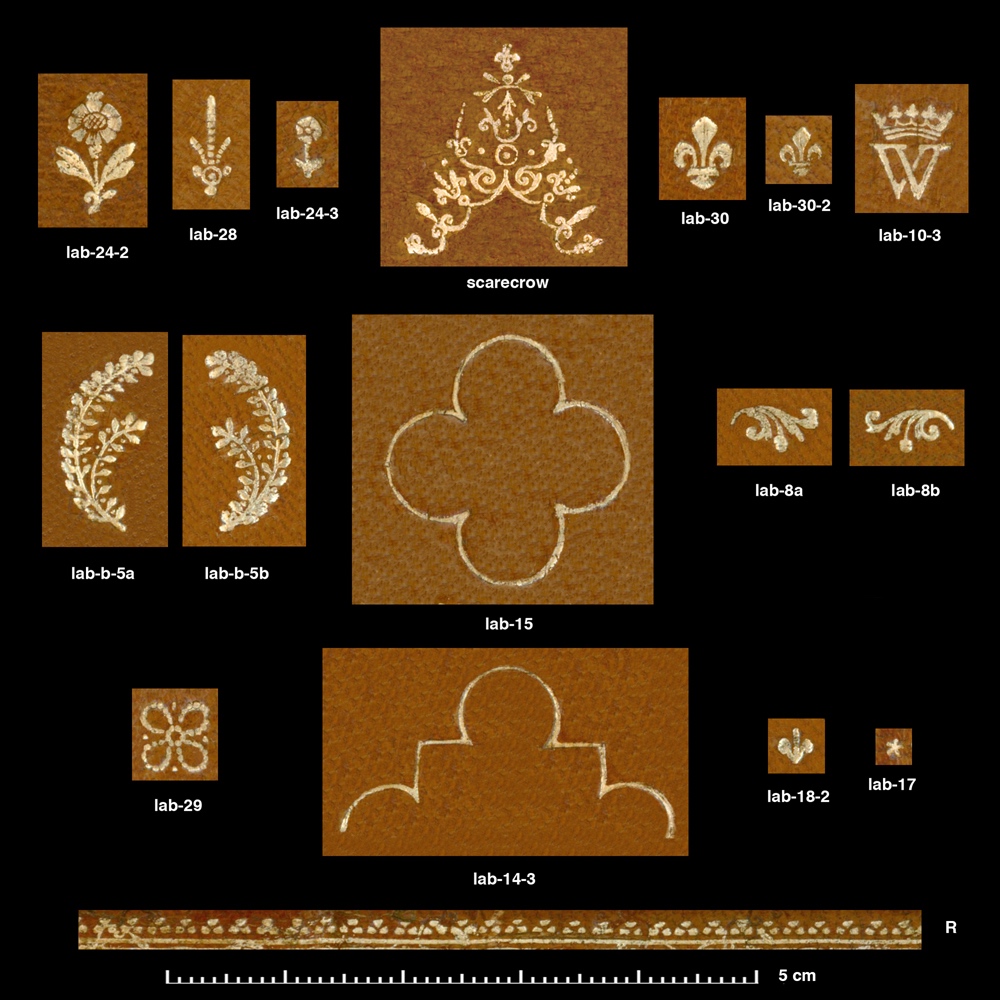
| The decorated spine shown above is another all over design from the workshop of boyet however the irregular execution of this decortation seems rather mysterious, we might speculate upon this, certainly this work lacks the superior quality of most of the bindings we have looked at previously. It bears a close relationship with the binding shown below, Boyet binding 49 Reliure au petit W from Isabelle de Conihout et P. Ract-Madoux, Reliures françaises du XVIIe siècle, chefs-d'oeuvre du Musée Condé 2002, pages 108-109. This is the last Boyet binding they show and give a date of 1707 to 1710 for this Group 10, i.e. bindings from the last half of Boyet's career Note the presence of the scarecrow imprint on this binding, that dominates the C8i9 decor. We have seen this motif in many bindings and most of these were probably executed in the second half of Boyet's career. These bindings for René-François de La Vieuville play an important part in fixing a chronological marker for the work of boyet at this period. |

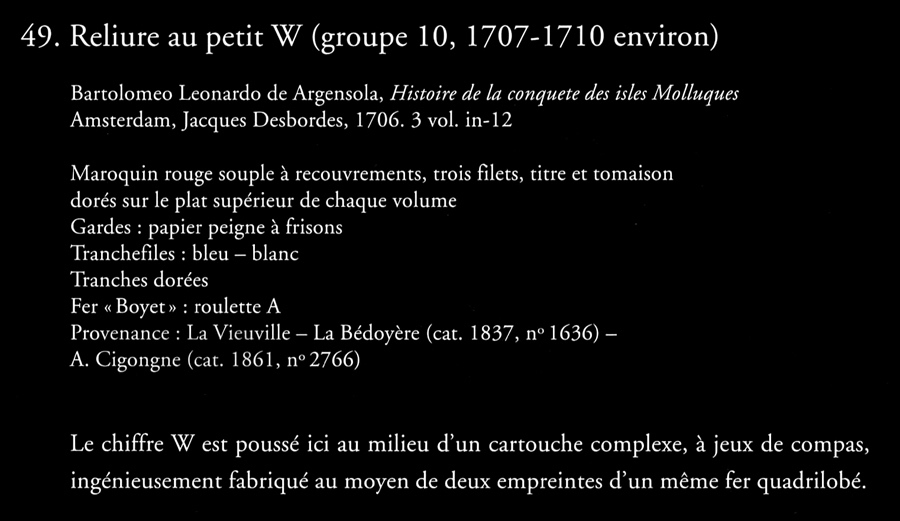
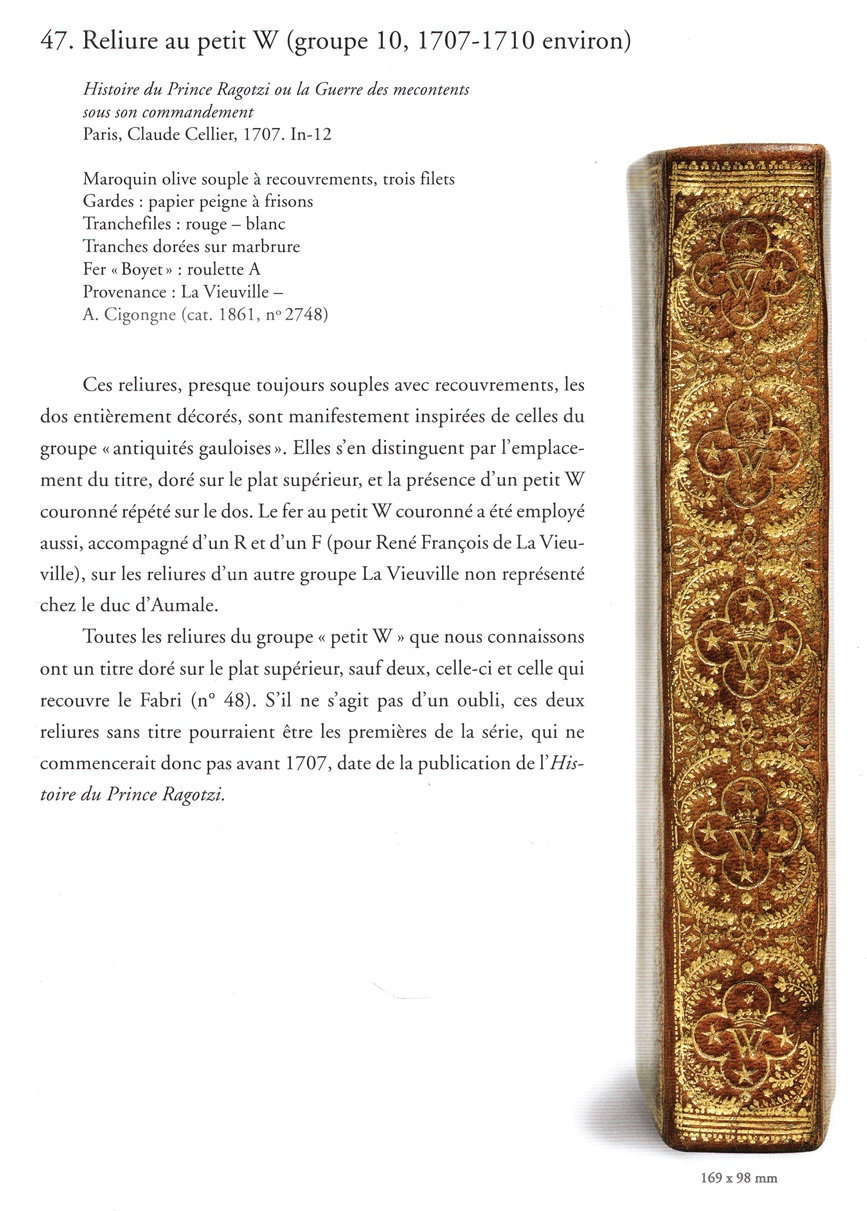

| Here is a fantastic discovery a way to see Boyet imprints at very high resolutions (+1200 dpi) at the British Library. In their Digitised Manuscripts Add MS 89066/1 and Add MS 89066/2, I found these bindings by searching the internet for "aux armes René-François, marquis de la Vieuville Luc-Antoine Boyet." Note that most of these ' Reliure au petit W' bindings were made without labels i.e. title and tomb. The ones that you see here were pasted over the original gold tooling of Boyet, and decorated with tools that did not appear until decades later. |
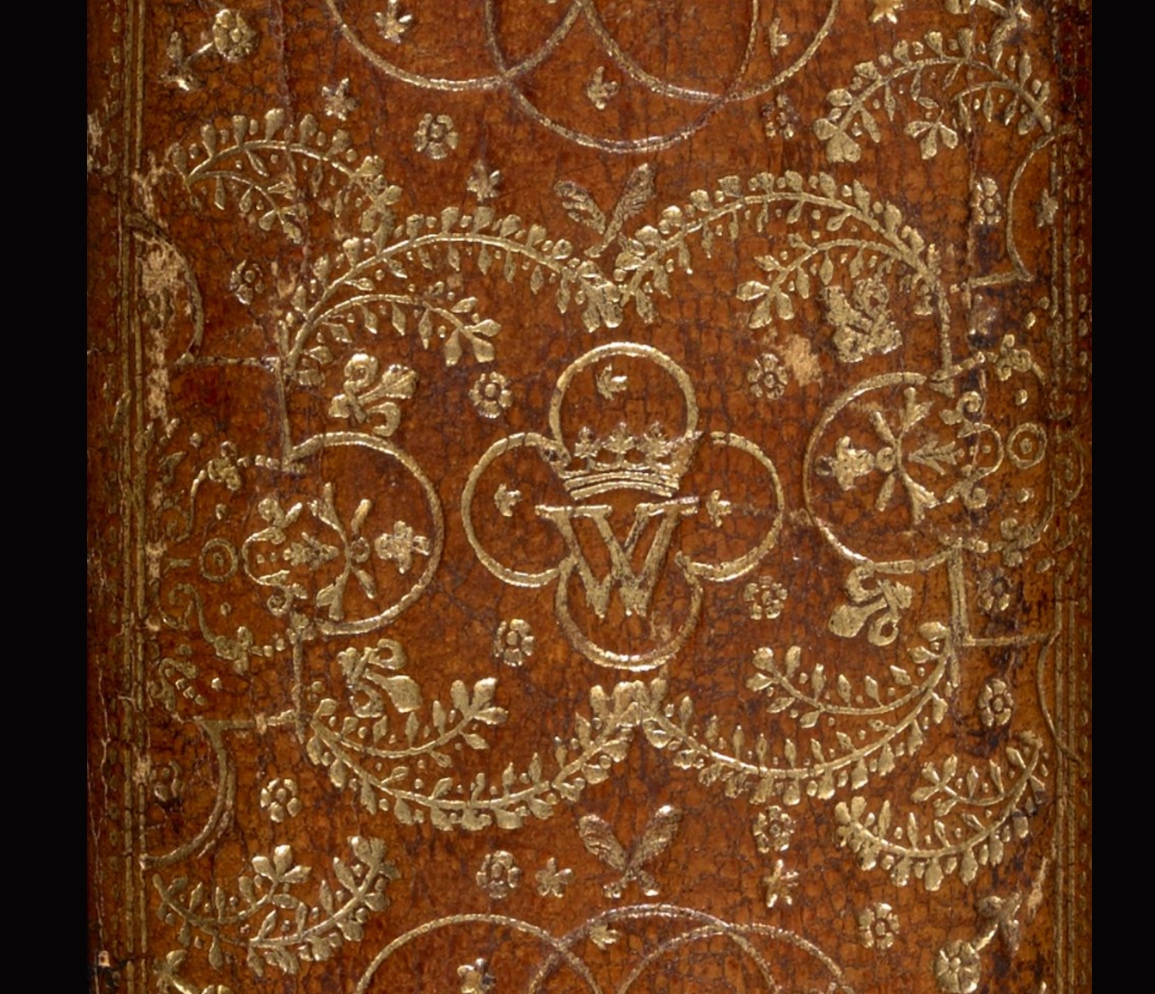
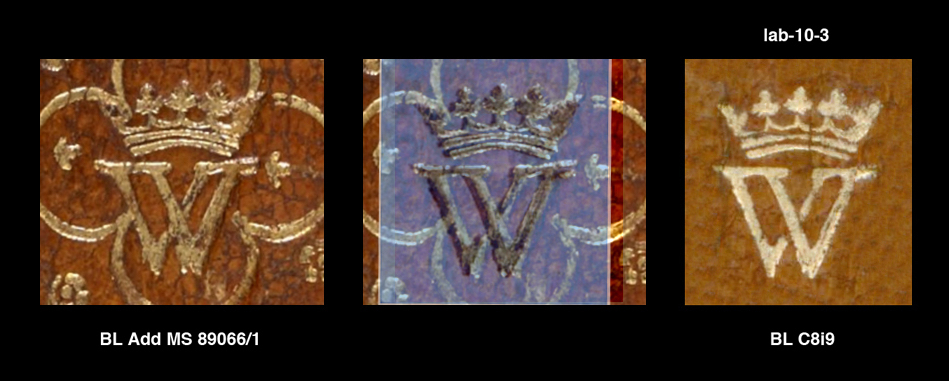
| Who was René-François de La Vieuville? and what was he doing with this manuscript... in the British Library manuscript notes we find the following information... |
| Origin: southern Netherlands (Bruges). The Ducal Account Registers of the dukes of Burgundy record the payment in July 1468 of the scribe and artist responsible for producing the volume (see Durrieu, 'Découverte de deux importants manuscrits' (1910)).- Loyset Liédet, 'enlumineur', paid for executing 20 large miniatures at 18 shillings each: £18.- Yvonnet le Jeune, 'clerc, escripvain', paid for writing 38 quires at 16 shillings each: £30 8s.- other costs included: 24 large illuminated initials at 12 pence each (£1 4s); binding at 31 shillings (£1 7s); metal fittings on the binding at 14 shillings.- the total cost of the book was £51 19s.Provenance:Philip the Good (b. 1396, d. 1467), Duke of Burgundy (from 1419), Count of Flanders, Artois and Franche Comté: the manuscript is recorded in the inventory of the ducal library made at Philip's death (see Barrois, Bibliothèque Prototypographique (1830), no. 792; and Doutrepont, La littérature française (1909), pp. xxxix-xl).Maximilian I of Austria (b. 1459, d. 1519), Holy Roman Emperor (from 1493). The manuscript is recorded in an inventory of his goods taken in Brussels in November 1487 as 'ung autre grant volume couvert de cuir noir, à tout cloans et cincq boutons de léton sur chacun costé, historié et intitulé: La Vengeance de notre Seigneur Jésus-Crist; encomenchant ou second feuillet, Come Jésus-Crist leur Seigneur, et finissant ou derrenier, in secula seculorum. Amen' (see Barrois, Bibliothèque Prototypographique (1830), p. 240, no. 1680). The book is recorded in the inventory compiled by Viglius de Zuichem in 1577.René-François (b. 1652, d. 1719), Marquis de La Vieuville, courtier to Louis XIV, governor of Poitou. Perhaps acquired by Charles, Duc de La Vieuville (b. 1583, d. 1653), courtier to Louis XIII and Royal Surintendant des finances, exiled in Brussels from 1633 following his involvement with the Fronde. The manuscript was bound for René-François, Marquis de La Vieuville, c. 1707-1710 by the doreur of the royal binder Luc Antoine Boyet... |
| Here I notice that the authors of this have accepted without reserve the Isabelle de Conihout et P. Ract-Madoux datation for such bindings, and also the legend that Boyet himself was not the doreur. In our research we have discovered that many of the same Boyet guilding tools were in use for decades, this means that from the beginning to the ending, some more than 40 years Boyet must have employed the same doreur? I prefer to think that he did do the gold tooling himself but at a certain point allowed an apprentice to take over the work when he himself was no longer able to do it. What ever the case may be we can follow the same tools throughtout the career of Boyet, just as though he did do the work, just as is the case of other famous bookbinders such as Pierre-Paul Dubuisson or Derome le jeune. As for the date that these bindings were executed, I suspect that they were not all done in the 1707-1710 three year time frame. The case of the Mystère de la Vengeance de Nostre Seigneur Ihesu Crist manuscript is similar in a way to C8i9 Histoire de la vie, miracles, enchentements et prophecies de Merlin both of these books are unique treasures that only a few could ever hope to possess. Boyet knew this, that these books would pass through his hands was a once in a lifetime occasion. I think we need to know more about the history of these books and René-François de La Vieuville who died in 1719 but could have entrusted this work to Boyet on his death bed. |
|
click here to return to the HOME page. click here to see an INDEX of the 2017 pages. see below links to previous work |
| Even experts are sometimes wrong, before you spend thousands on a book, please do your own research! Just because I say a certain binding can be attributed to le Maitre isn't any kind of guarantee, don't take my word for it, go a step further and get your own proof. In these pages I have provided you with a way of doing just that. |
| Virtual Bookings, created by L. A. Miller | return to the Home page of VIRTUAL BOOKBINDINGS |